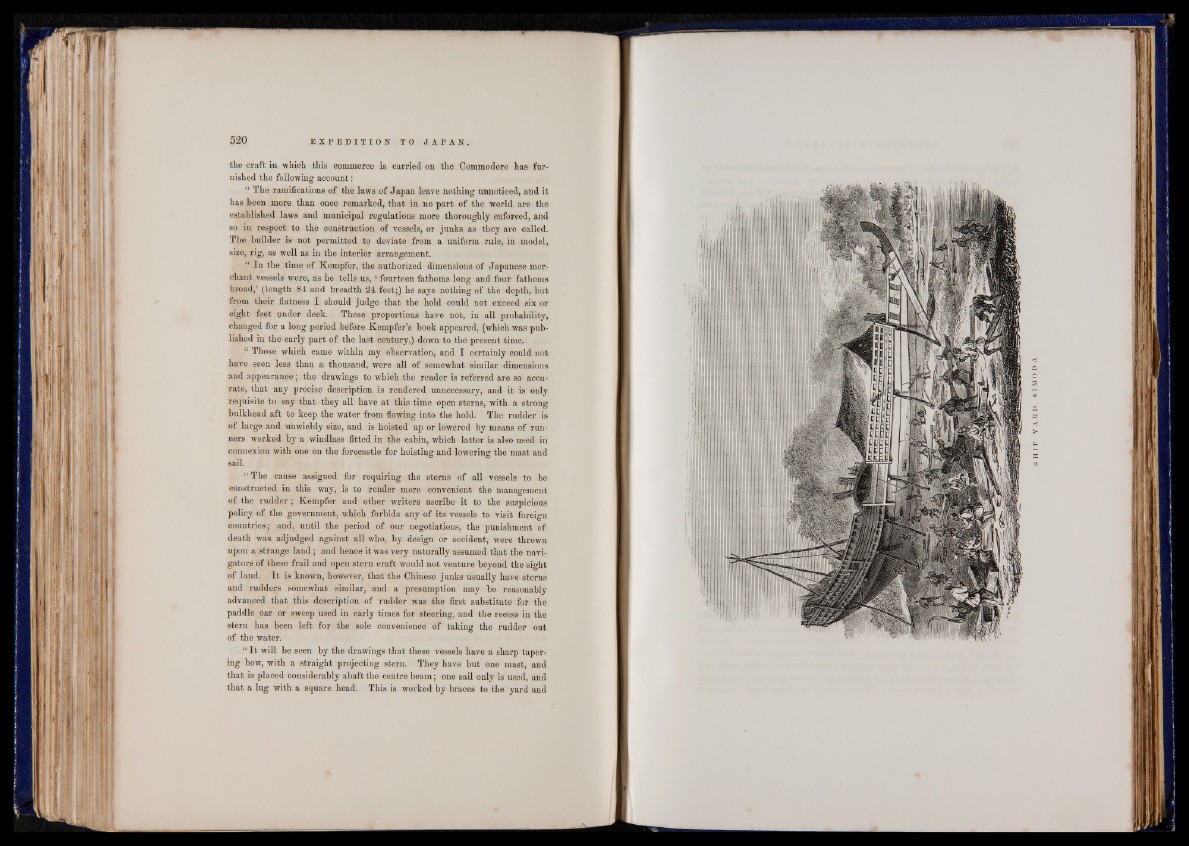
the craft in which this commerce is carried on the Commodore has furnished
the following account:
“ The ramifications of the laws of Japan leave nothing unnoticed, and it
has been more than once remarked, that in no part of the world are the
established laws and municipal regulations more thoroughly enforced, and
so in respect to the construction of vessels, or junks as they are called.
The builder is not permitted to deviate from a uniform rule, in model,
size, rig, as well as in the interior arrangement.
“ In the time of Kempfer, the authorized dimensions of Japanese merchant
vessels were, as he tells us, 1 fourteen fathoms long and four fathoms
broad,’ (length 84 and breadth 24 feet;) he says nothing of the depth, but
from their flatness I should judge that the hold could not exceed six or
eight feet under deck. These proportions have not, in all probability,
changed for a long period before Kempfer’s book appeared, (which was published
in the early part of the last century,) down to the present time.
“ Those which came within my observation, and I certainly could not
have seen less than a thousand, were all of somewhat similar dimensions
and appearance; the drawings to which the reader is referred are so accurate,
that any precise description is rendered unnecessary, and it is only
requisite to say that they all have at this time open sterns, with a strong
bulkhead aft to keep the water from flowing into the hold. The rudder is
of large and unwieldy size, and is hoisted up or lowered by means of runners
worked by a windlass fitted in the cabin, which latter is also used in
connexion with one on the forecastle for hoisting and lowering the mast and
sail.
“ The cause assigned for requiring the sterns of all vessels to be
constructed in this way, is to render more convenient the management
of the rudder; Kempfer and other writers ascribe it to the suspicious
policy of the government, which forbids any of its vessels to visit foreign
countries; and, until the period of our negotiations, the punishment of
death was adjudged against all who, by design or accident, were thrown
upon a strange land; and hence it was very naturally assumed that the navigators
of these frail and open stern craft would not venture beyond the sight
of land. I t is known, however, that the Chinese junks usually have sterns
and rudders somewhat similar, and a presumption may be reasonably
advanced that this description of rudder was the first substitute for the
paddle oar or sweep used in early times for steering, and the recess in the
stern has been left for the sole convenience of taking the rudder out
of the water.
“ I t will be seen by the drawings that these vessels have a sharp tapering
bow, with a straight projecting stern. They have but one mast, and
that is placed considerably abaft the centre beam; one sail only is used, and
that a lug with a square head. This is worked by braces to the yard and